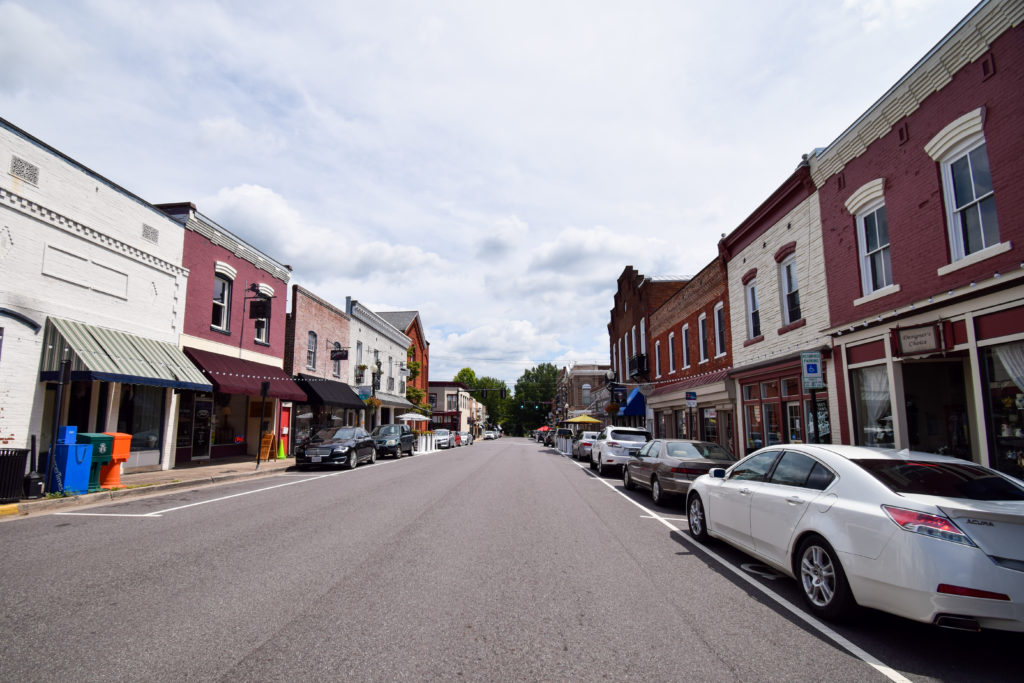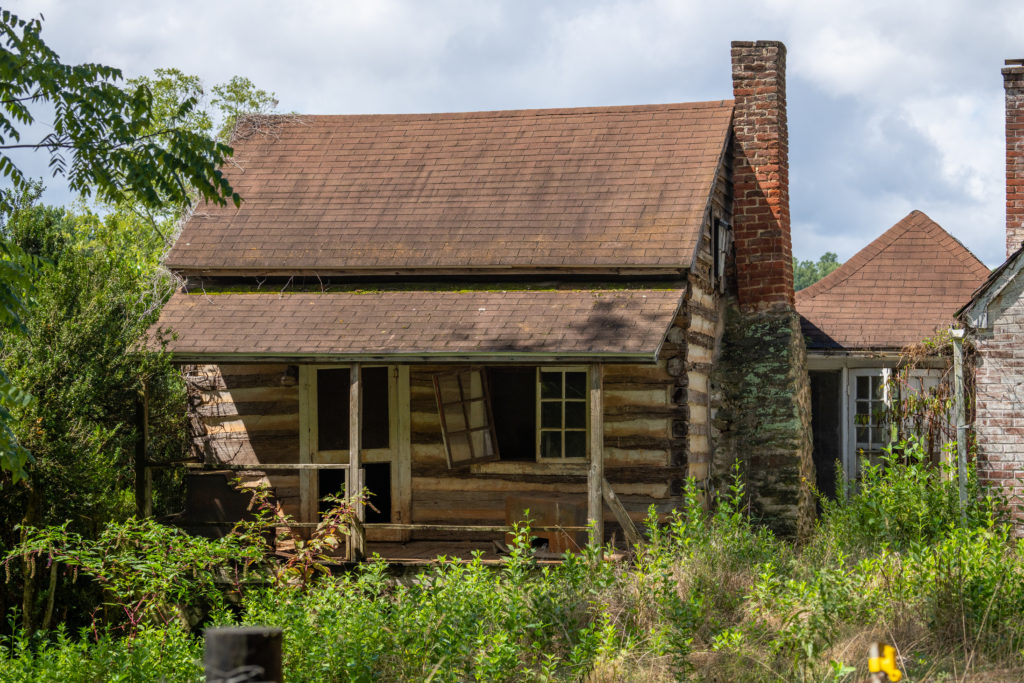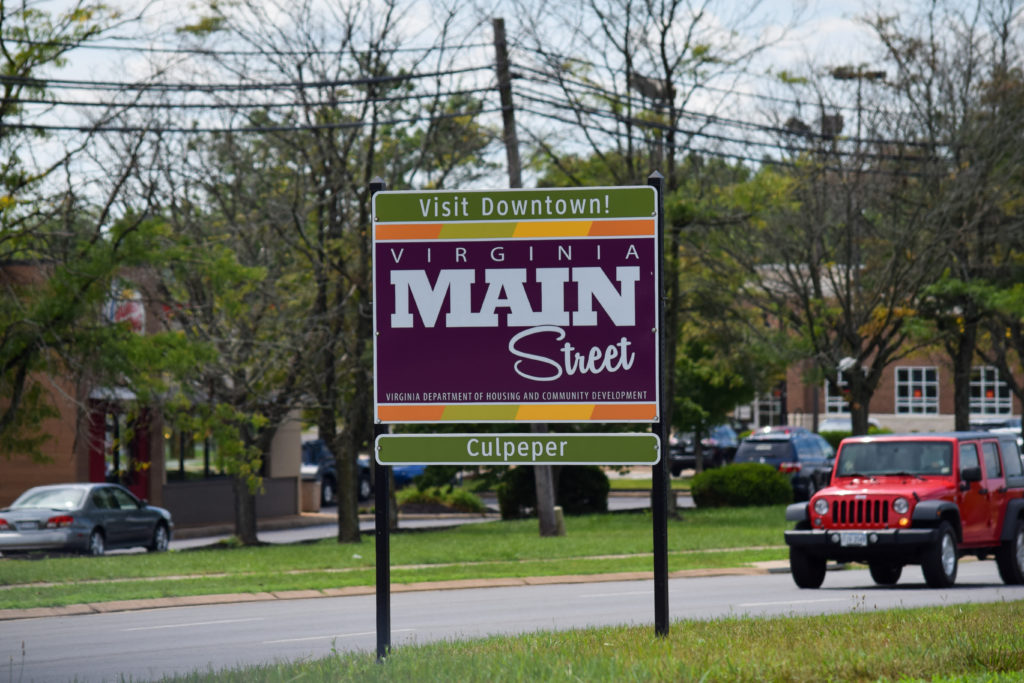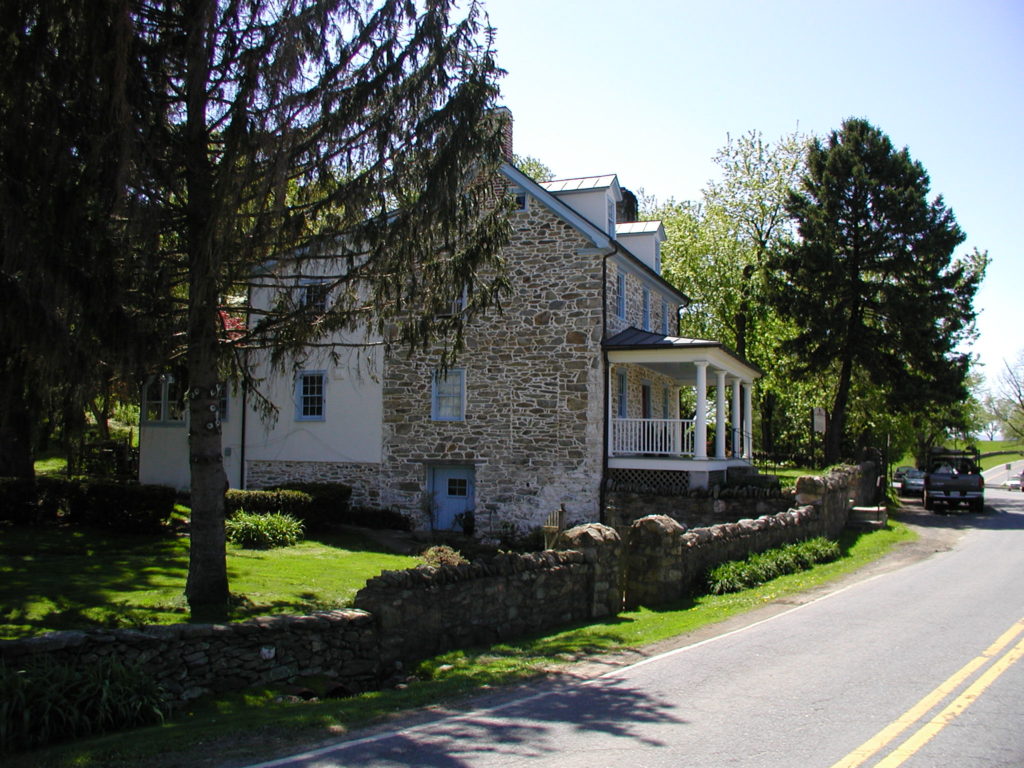Throughout its history, PEC has worked to create historic districts across its nine-county service area in an effort to bring communities together to think about the long-term protection of their unique cultural and historic assets.
On this page: What is a Historic District?; Current Historic Districts In Progress; Benefits of Historic Districts; Virginia’s Main Street Program; How Does Listing Affect My Property Rights?; Historic Overlay Districts; Creating Historic Districts.
What is a Historic District?
A historic district is a geographical area recognized for its historical significance by formal listing on the Virginia Landmarks Register and the National Register of Historic Places. A historic district may be a village, a neighborhood of a town or city, a battlefield or a rural landscape. Listing an area as a Historic District is only an honorary designation, but has real benefits in educating communities about their unique cultural, historic and natural assets. This education often leads to a greater effort to preserve that history for future generations.

The documentation for a historic district provides a record of what currently exists, a snapshot in time of the structures in the district. Should any be lost over time to fire, neglect or the bulldozer, the record is there. A further benefit is the documentation of not just the “grand” buildings, like manor houses, but also the barns, enslaved peoples and tenant quarters, churches, and smoke houses. These are all part of the rich tapestry of history, and historic district documentation calls attention to the lives of both ordinary and extraordinary prior inhabitants.
Historic Overlay Districts
Benefits of Historic Districts
There are a number of benefits associated with the creation of a historic district. First, landowners of properties within a listed historic district can use historic preservation as a qualifying purpose under IRS regulations when taking a charitable deduction for a conservation easement. Second, the process of creating a historic district is a powerful place-making tool, which educates residents and landowners within the proposed district about the history of their property, leading them to develop a better understanding of its significance and a deeper pride in their property. Third, Virginia Code requires the State Corporation Commissions (SCC) to minimize impacts to historic districts when siting transmission lines.

Designation on the National Register of Historic Places provides additional protection from certain federal actions for buildings or landscapes in the district (see Section 106), as well as the possibility of tax credits for major building renovations. Although any historic designation requires time-consuming research and documentation of the area and its structures—which may be costly if an architectural historian is employed—the end result is a broader appreciation of historic resources within the community. Historic districts can stimulate communities to think about their past, their future, and the long-term protection of their resources.
Historic districts also provide opportunities for heritage tourism and place-based economic development through the protection of unique resources such as cultural heritage and traditions, historic structure, natural and scenic resources, and landscapes. Preserving historic resources results in significant economic benefits for local communities as historic sites draw tourists, historic restoration projects create jobs, and traditional downtowns become thriving business districts. For instance:
- The Preservation Alliance of Virginia has found that a quarter of all Virginia visitors stop at Civil War sites.
- The Civil War Preservation Trust has found that Civil War tourists stay 1-2 days longer than other kinds of tourists.
- The Virginia Department of Historic Resources has found that over 15 years, the rehabilitation of historic properties created over 12,000 jobs, which increased household incomes by $275 million.
- The Virginia Main Street Program reports that, since 1985 the program has led to almost 10,000 new jobs, with 3,500 businesses created, retained or expanded.
Virginia’s Main Street Program
The Main Street America program was started by the National Trust for Historic Preservation in the 1970s to combine historic preservation with economic development for the purpose of restoring prosperity and vitality to downtowns and neighborhood business districts. The Virginia Main Street program is a state-funded program that encourages private sector investment, local government participation and volunteerism in order to revitalize historic downtowns as thriving business districts. Local Main Street programs are helping to transform downtowns into desirable shopping, dining, and business destinations in seven Piedmont communities: Berryville, Warrenton, Culpeper, Orange, Leesburg, and more recently Madison and Stanardsville.

How Does Listing Affect My Property Rights?
It doesn’t. Historic district designation does not require property owners to follow any particular rules, such as those relating to repair, restoration, maintenance or construction of their homes. Designation does not—by law—involve any regulation of property in the district. For instance, landowners with property in a historic district could still alter or even demolish a building. In fact, designation offers landowners some new opportunities and protections. Specifically, landowners in a historic district may be eligible for state and federal tax credits when they restore historic structures. Historic district status also requires that all projects involving federal funds (such as highways) minimize their impact on historic resources.
Although historic districts entail no restrictions, they can foster local pride and motivate individuals or communities to protect valuable resources. For example, in the nearly 30 years since the Madison-Barbour and Southwest Mountains Rural Historic Districts (RHDs) were listed, levels of conservation in these areas have surpassed more than 40% of each district being protected. Following a listing of the Rapidan River-Clark Mountain RHD on the National Register of Historic Places, we expect to see increased levels of conservation within the district, a broader understanding and appreciation of the history of the area and the resources encompassed within it.

Current Historic Districts in Progress
Sometimes confused with historic districts listed on the State and National Registers, a historic zoning overlay district is an entirely different designation established by a local governing body. These zoning overlay districts are established in accordance with the local zoning process, including review and public hearings before the local governing body. Their purpose is to directly protect historic resources and property values by establishing rules to preserve the historic character of buildings in the district as change occurs over time. Localities usually appoint an Architectural Review Board to approve the appropriateness of renovations to buildings in historic zoning overlay districts.
Only locally designated historic districts are subject to local zoning ordinances and procedures. Most historic districts listed on the State and National Registers do not have local historic zoning overlay district designation. Those that do are generally in cities and towns where the buildings are in close proximity and have a collective visual impact.
Creating Historic Districts
Most historic districts originate as grassroots initiatives organized by neighbors. Some are the initiative of local governments, such as Fauquier County’s initiative to nominate 21 historic villages in the county. Proposed districts are nominated to the Virginia Department of Historic Resources (DHR) for listing on the State and National Registers. The nomination is a formal process that requires research on the history of the area, and identification, description and photographic documentation of historic buildings and other items of historic interest. Nomination forms are typically prepared by architectural historians, who are trained in preparing this type of documentation.

The nomination has two steps. First, a Preliminary Information Form (PIF) is submitted to DHR, which provides an overview of the proposed district’s historic significance and preliminary boundaries. Once the PIF is approved by DHR, a National Register nomination form is prepared and submitted to DHR. DHR notifies all landowners in and adjacent to the proposed district, and holds a public hearing in the community prior to consideration of the nomination by the State Board of Historic Resources. When the nomination is approved, it is forwarded to the National Park Service for final review and approval to the National Register. The criteria for eligibility are the same for the State and National Registers, so only one nomination process is required.
